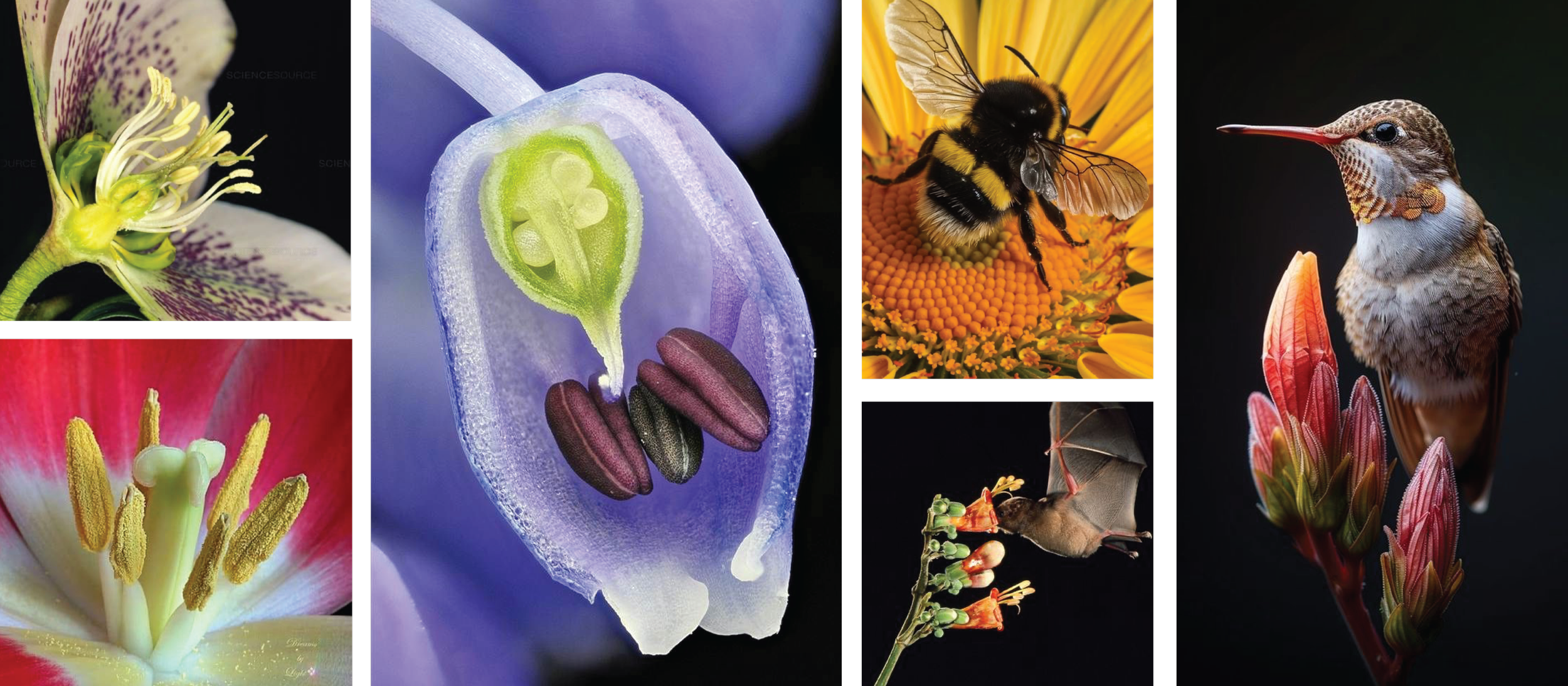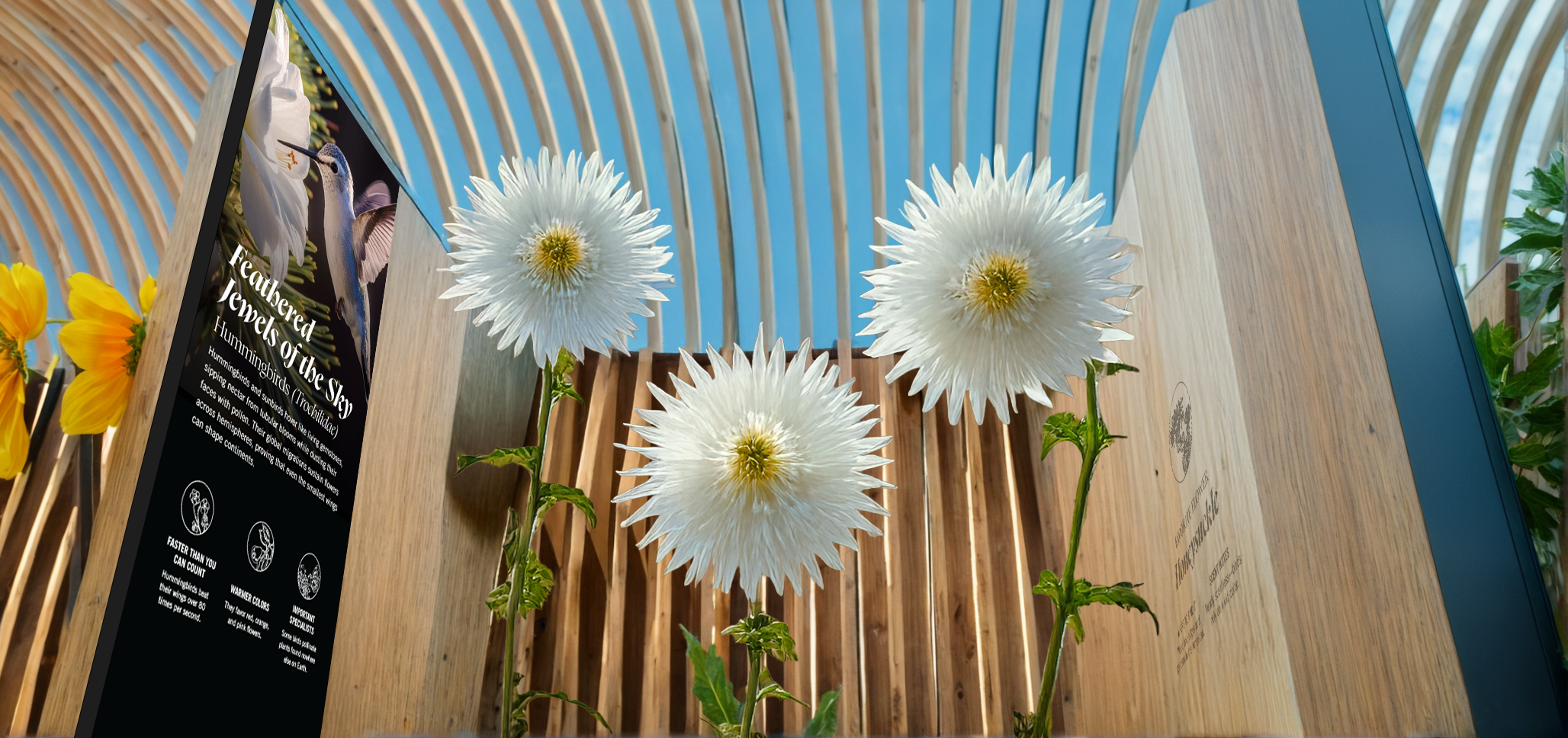
Precious Pollinators
PROJECT EXHIBITION DESIGN, IDENTITY, ENVIRONMENTAL GRAPHICS
ROLE LEAD DESIGNER
INSTITUTION PRATT EXHIBITION DESIGN CERTIFICATE
Pollinators are essential to every ecosystem, yet they struggle with a unique challenge: it’s hard for people to empathize with creatures as small as bats, hummingbirds, or insects. This exhibit began as a creative response to that problem — what if we could inspire connection with even the tiniest beings? As the lead designer, I developed the concept, created 3D drawings, and designed the SketchUp illustrations to reimagine how visitors perceive these vital creatures.


CONCEPT DEVELOPMENT
The concept & design drew inspiration from macro photography that reveals the intricate beauty of pollinators and the flowers they depend on up close. The challenge? Transforming a standard shipping container into an immersive journey. Visitors would move through the space, first enjoying the beauty of a wildflower garden, and then experiencing flowers at the scale a pollinator would, surrounded by oversized blooms that engage the senses. These sculptures doubled as scent diffusers, emitting fragrances native to the pollinators’ habitats, creating a sensory bridge between humans and the tiny animals they rarely notice.
PLANNING & EXECUTION
To amplify the sense of scale, tall wood slats were installed to frame the flower rooms, making visitors feel small in contrast—just like a pollinator navigating a meadow. The slats also visually connected the exhibit’s interior to an exterior wildflower garden, where guests could sit and reflect. Space was maximized by repurposing a knocked-out wall as flooring. Materials like recycled wood and the container itself grounded the design in sustainability, while the flowers—crafted from wax-coated composites, paper, and fabric—balanced delicacy with durability. Graphics leaned into elegant typography and photography to mirror the exhibit’s blend of science and artistry.
FINAL EXHIBITION
Spatial planning was mapped out in SketchUp, ensuring flow and functionality within the compact container. Renderings combined the AI-generated Diffusion plugin, later composited in Photoshop to visualize the exhibit’s real-world impact. These visuals highlighted how light, texture, and scale would converge to create an environment that felt both fantastical and deeply rooted in the pollinators’ world—proving that even the smallest creatures can leave lasting memories and learnings with their stories.















